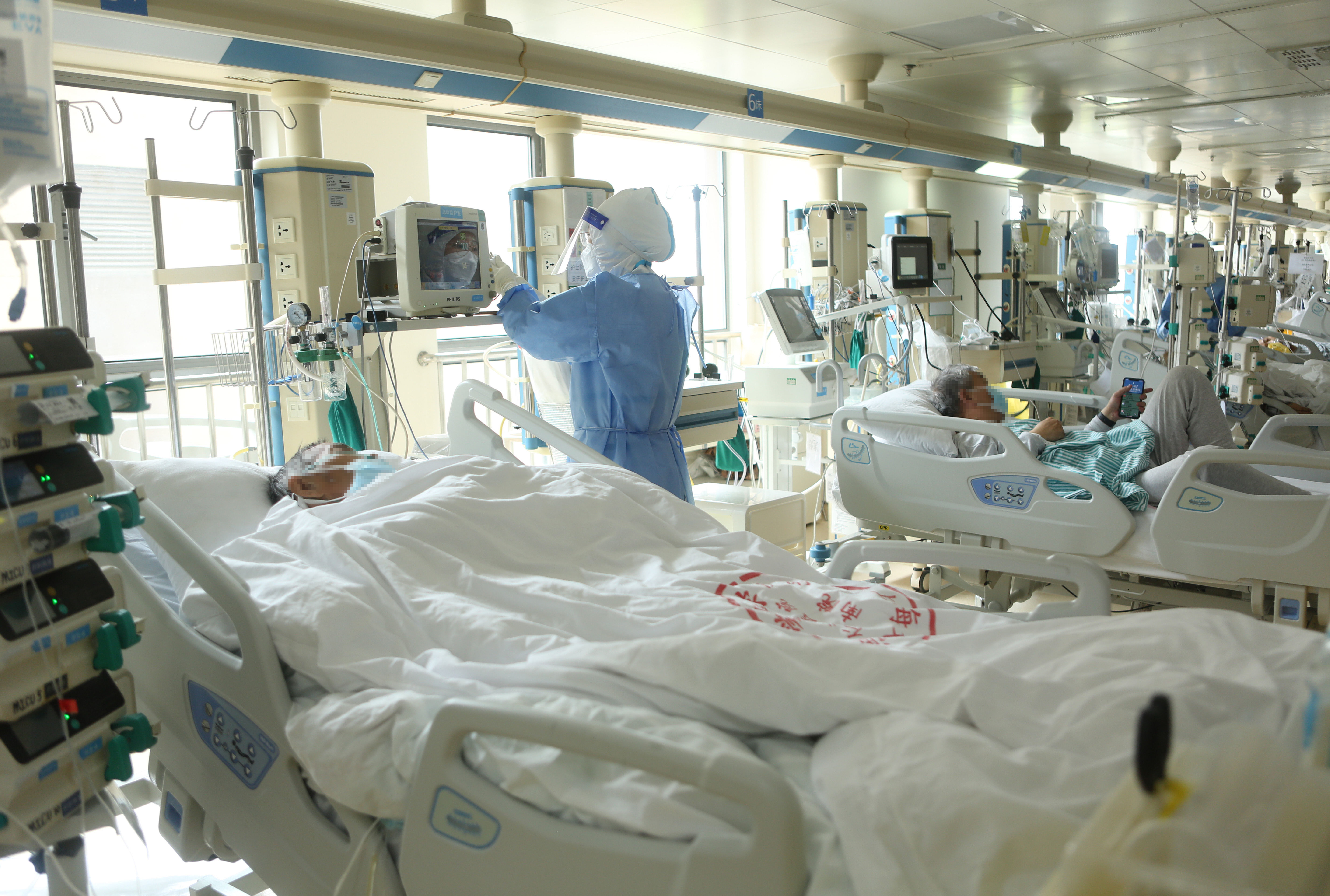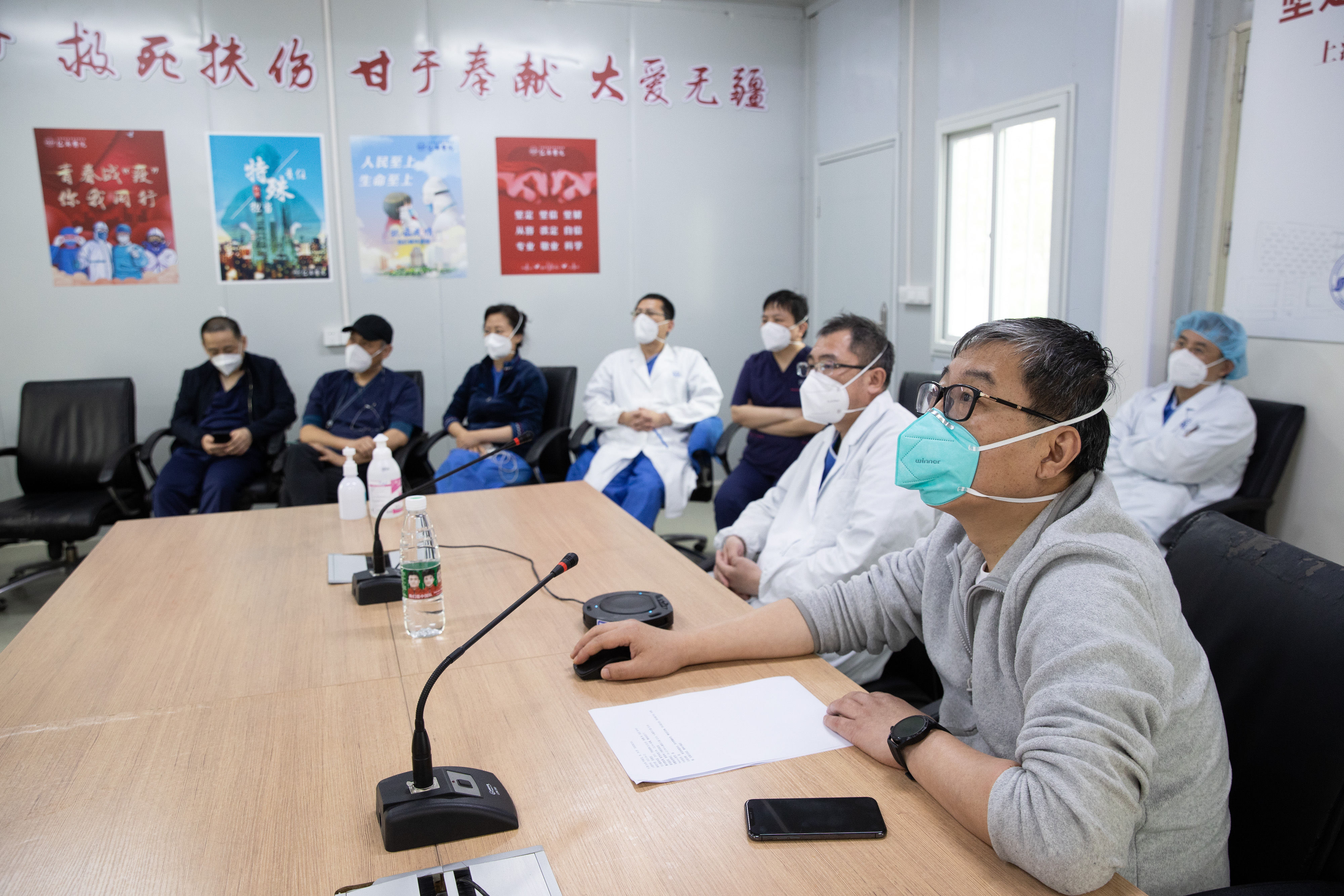Xinhua News Agency, Shanghai, April 26 (Reporters Xu Xiaoqing, Gong Wen, Yang Kai) Since March, the new crown pneumonia epidemic has fluctuated in many places in China, and the cumulative number of newly infected people in Shanghai has increased significantly. In this round of epidemics, the mutant strain of Omicron spreads rapidly and is highly concealed. The cumulative number of positive infections reported in Shanghai has exceeded 500,000.
Careful treatment of patients, especially severe and critically ill patients, to reduce the fatality rate is an important part of the battle against the epidemic.

Medical staff at Shanghai Renji Hospital check the monitor in the intensive care unit. Photo by Huang Xing issued by Xinhua News Agency
Zhang Boli, academician of the Chinese Academy of Engineering and honorary president of Tianjin University of Traditional Chinese Medicine, said in an interview in Shanghai recently that the proportion of people over 60 years old among the confirmed cases accounted for 30%; At the same time, most of the elderly suffer from underlying diseases, including hypertension, diabetes, coronary heart disease, Alzheimer’s disease, tumors, and uremia.
“These factors combined with the new coronary pneumonia will lead to serious illness, and the disease progresses rapidly, and it is easy to turn into severe and critical illness, which requires our special attention.” Zhang Boli said.
It is understood that in the treatment of severe patients in this round of epidemic, Shanghai adheres to three “equal emphasis”, namely, prevention of “slight to severe” and severe treatment, equal emphasis on the treatment of new coronary pneumonia and the treatment of basic diseases, Both Chinese and Western medicine treatment.
Wang Xingpeng, director of the Shanghai Shenkang Hospital Development Center, said at a press conference that Shanghai has further strengthened the treatment capacity of city-level designated hospitals. According to the characteristics of many and serious underlying diseases of elderly patients, Shanghai has gathered more than 360 critical care medical experts with rich clinical diagnosis and treatment experience in the city, plus experts supported by other provinces and cities, and jointly established 9 critical care teams, stationed in 8 city-level designated locations The hospital implements centralized management and comprehensive treatment for severe COVID-19 patients, critical patients, and COVID-19-positive patients with severe underlying diseases.

The medical team of Shanghai Yueyang Hospital used traditional Chinese medicine acupuncture to treat patients with new coronary pneumonia. Photo courtesy of the interviewed institutions
Recently, Shanghai has upgraded some makeshift hospitals, equipped with hardware facilities and equipment in accordance with the standards of designated hospitals for new coronary pneumonia, to meet the needs of clinical treatment. At the same time, Shanghai has also established a treatment mechanism for early monitoring, early warning, early judgment, and early intervention for critically ill patients, focusing on patients with multiple underlying diseases. In city-level designated hospitals, multidisciplinary joint rounds and consultations are carried out at fixed times every day, and “one person, one policy” is used to carry out treatment, and the treatment plan can be adjusted in a timely manner.
Shanghai has also established 8 municipal expert rescue teams consisting of more than 300 experts. Each city-level expert group is responsible for the designated hospitals and makeshift hospitals in the two districts of Shanghai, and conducts joint consultations with the district-level expert group to guide the relevant treatment work, and promptly refer critically ill patients to the city-level designated hospitals. hospital for further treatment.
Zhang Boli said that, in general, it is necessary to identify high-risk groups, pay attention to changes in underlying diseases, multidisciplinary cooperation, early intervention, syndrome differentiation, one person, one strategy, and grasp the main symptoms and core pathogenesis. Clinical treatment strategies of integrated western medicine.
“The timing of medication should be early and fast, and the treatment strategy should be clear and unblocked, focusing on regulating the overall state of the body, preventing elderly patients from progressing to severe disease, cutting off the disease, and reducing death.” Zhang Boli advocated, Intensive medicine, respiratory, nutritional support, nursing, traditional Chinese medicine, etc., each discipline gives full play to its own advantages and collective efforts, integrating traditional Chinese and Western medicine, and using both Chinese and Western medicine, so as to control the disease, reverse the disease, and reduce the mortality rate.

On April 23, in the southern campus of Renji Hospital Affiliated to Shanghai Jiaotong University School of Medicine, doctors and Experts from the parent hospital have discussed the diagnosis and treatment plans for critically ill patients in the hospital one by one and formulated a “one person, one policy”. Photo by Xinhua News Agency reporter Jin Liwang
He also said that at present, traditional Chinese medicine takes the most dangerous factors for each patient according to the underlying diseases and other factors, and adopts a syndrome differentiation method. methods and targeted treatment strategies. Specifically, “early” and “precise”, early detection, early warning, early research and judgment, and early intervention; targeted and precise treatment, “one person, one policy, one person, one day” method of treatment.
At the temporary practice site of Shanghai Public Health Clinical Center, the medical team of Yueyang Integrated Traditional Chinese and Western Medicine Hospital affiliated to Shanghai University of Traditional Chinese Medicine has treated many patients with advanced age, multiple comorbidities and high-risk conditions. Experts have implemented “one person, one policy, and rules to follow” for each high-risk patient, such as strengthening monitoring and nursing, etc., and continuously monitor the patient’s heart rate, blood pressure, respiration, oxygen saturation, etc. 24 hours a day. Guarding and patrolling on duty.
The medical team also made full use of the coping experience accumulated in Wuhan Leishenshan Hospital two years ago in this round of severe treatment, pulling an elderly new crown patient with a history of lung cancer from the death line. came back. “One person, one policy is also reflected in the specific nursing plan to cooperate with the treatment, which helps the elderly patients to save their lives faster.” said Liu Chenghao, a doctor at Shanghai Yueyang Hospital.
Along with the Shanghai medical staff, there are also medical teams from many provinces across the country who are on the front line of critical care. “For elderly patients with underlying diseases, doctors should always pay attention to the changes in their conditions. We have equipped a variety of advanced equipment for the treatment of critically ill patients with severely impaired cardiopulmonary function. We must do our best to treat critically ill patients. Reduce the mortality rate and improve the cure rate.” said Xu Min, a critical care physician at the Second Xiangya Hospital of Central South University.